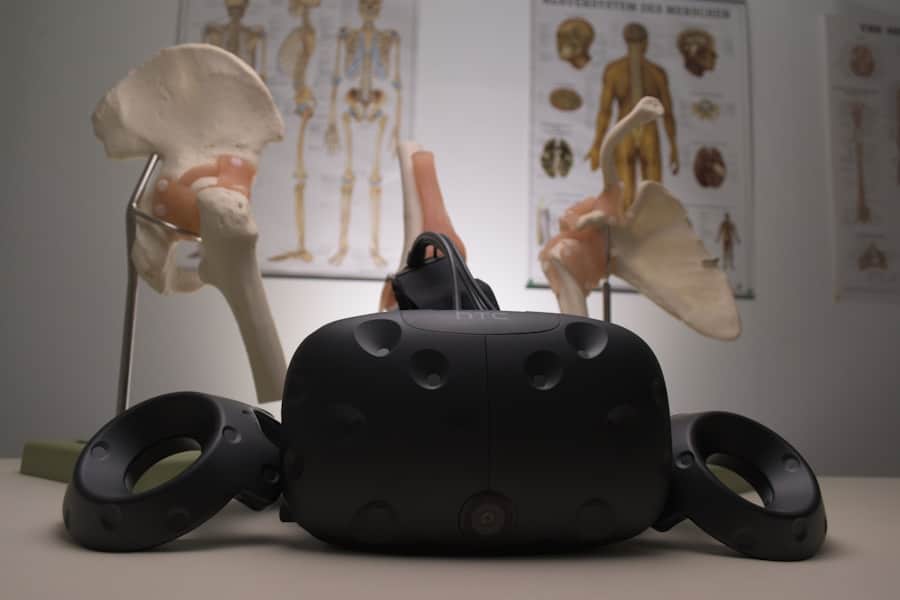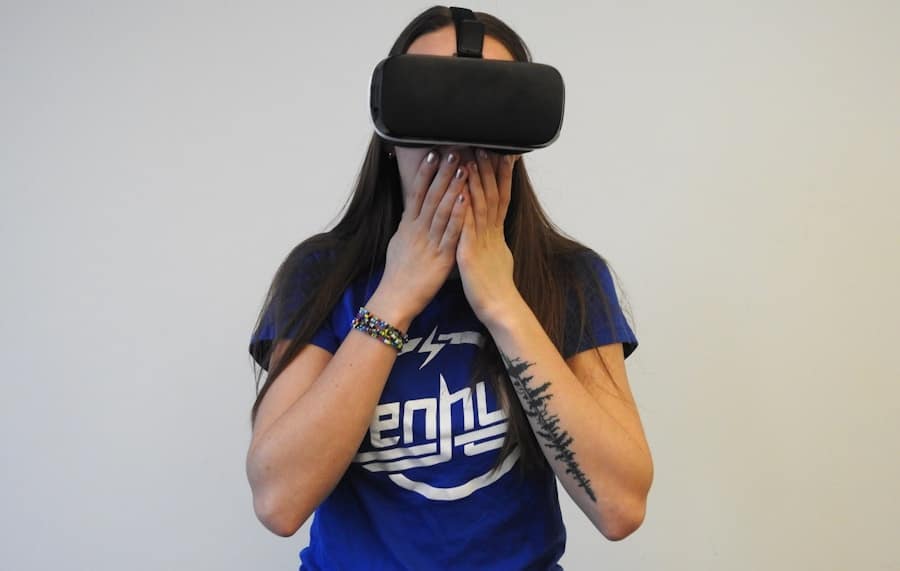Chronic pain is a complex and multifaceted condition that affects millions of individuals worldwide. Unlike acute pain, which serves as a warning signal for injury or illness, chronic pain persists long after the initial cause has resolved, often lasting for months or even years. This type of pain can stem from various sources, including conditions such as arthritis, fibromyalgia, neuropathy, and even psychological factors like anxiety and depression.
The experience of chronic pain is not merely a physical sensation; it can profoundly impact an individual’s emotional and psychological well-being, leading to a cycle of suffering that is difficult to break. The prevalence of chronic pain is staggering, with estimates suggesting that approximately 20% of adults in the United States experience chronic pain. This condition can significantly impair daily functioning, affecting work, relationships, and overall quality of life.
The biopsychosocial model of health emphasizes that chronic pain is influenced by biological, psychological, and social factors, making it a unique challenge for healthcare providers. Understanding the intricacies of chronic pain is essential for developing effective treatment strategies that address not only the physical symptoms but also the emotional and social dimensions of the experience.
Key Takeaways
- Chronic pain is a complex condition that can have physical, emotional, and psychological impacts on individuals.
- Traditional pain management methods such as medication and physical therapy may not always provide effective relief for chronic pain.
- Virtual reality therapy is a non-invasive and drug-free alternative for managing chronic pain by distracting the brain from pain signals.
- VR therapy works by immersing patients in a virtual environment that engages their senses and shifts their focus away from pain.
- The benefits of VR therapy for chronic pain management include reduced reliance on medication, improved quality of life, and increased mobility and function.
The Limitations of Traditional Pain Management
Traditional pain management approaches often rely heavily on pharmacological interventions, including nonsteroidal anti-inflammatory drugs (NSAIDs), opioids, and other analgesics. While these medications can provide temporary relief for some patients, they are not without significant limitations. Opioids, in particular, have garnered attention due to their potential for addiction and misuse, leading to a public health crisis in many countries.
Furthermore, long-term use of these medications can result in tolerance, requiring higher doses to achieve the same level of pain relief, which can exacerbate the risk of side effects and dependency. In addition to pharmacological treatments, physical therapy and other rehabilitative approaches are commonly employed in managing chronic pain. However, these methods may not always yield satisfactory results for every patient.
Many individuals with chronic pain report that traditional therapies fail to address the psychological components of their condition, such as fear of movement or anxiety related to their pain. As a result, there is a growing recognition among healthcare professionals that a more holistic approach is necessary—one that integrates both physical and psychological strategies to provide comprehensive care for those suffering from chronic pain.
Introducing Virtual Reality Therapy
Virtual reality (VR) therapy has emerged as an innovative and promising approach to managing chronic pain. By immersing patients in a computer-generated environment, VR therapy offers a unique way to distract from pain and facilitate relaxation. This technology has evolved significantly over the past few decades, transitioning from gaming and entertainment into therapeutic applications across various medical fields.
In the context of chronic pain management, VR therapy leverages the brain’s capacity for neuroplasticity—the ability to reorganize itself by forming new neural connections—to help patients alter their perception of pain. The use of VR therapy in clinical settings has gained traction due to its non-invasive nature and minimal side effects compared to traditional pharmacological treatments. Patients can engage with immersive environments that transport them away from their discomfort, allowing them to focus on enjoyable activities or calming experiences.
This shift in focus can lead to reduced pain perception and improved emotional well-being. As research continues to explore the efficacy of VR therapy for chronic pain management, early findings suggest that it may serve as a valuable adjunct to existing treatment modalities.
How VR Therapy Works
VR therapy operates on several principles that contribute to its effectiveness in managing chronic pain. One key mechanism is distraction; by immersing patients in engaging virtual environments, their attention is diverted away from their pain signals. This distraction can be particularly beneficial during painful procedures or rehabilitation exercises, where patients may otherwise experience heightened discomfort.
For instance, studies have shown that patients undergoing wound care or physical therapy report lower pain levels when using VR compared to traditional methods. Another important aspect of VR therapy is its ability to promote relaxation and mindfulness. Many VR programs are designed to guide users through calming experiences, such as serene landscapes or guided meditations.
These experiences can help reduce anxiety and stress, which are often exacerbated by chronic pain conditions. By fostering a sense of calm and presence in the moment, VR therapy can enhance patients’ coping mechanisms and improve their overall mental health. Additionally, some VR applications incorporate biofeedback mechanisms that allow users to visualize their physiological responses, further empowering them to manage their pain effectively.
The Benefits of VR Therapy for Chronic Pain Management
The benefits of VR therapy for chronic pain management extend beyond mere distraction; they encompass a holistic approach that addresses both physical and psychological aspects of pain. One significant advantage is the potential for increased patient engagement in their treatment process. Traditional methods may leave patients feeling passive or powerless in managing their pain; however, VR therapy encourages active participation by allowing individuals to choose their virtual experiences and tailor them to their preferences.
Moreover, VR therapy has been shown to enhance the effectiveness of other therapeutic interventions. For example, when combined with physical therapy exercises, VR can motivate patients to engage more fully in their rehabilitation process.
The immersive nature of VR can make exercises feel less daunting and more enjoyable, leading to improved adherence and outcomes.
Success Stories of Patients Using VR Therapy
Numerous success stories highlight the transformative impact of VR therapy on individuals living with chronic pain. One notable case involved a patient with fibromyalgia who had struggled for years with debilitating pain and fatigue. After incorporating VR therapy into her treatment plan, she reported significant reductions in her pain levels during sessions and an overall improvement in her quality of life.
The immersive experiences allowed her to escape her discomfort temporarily and engage in activities she had previously avoided due to fear of exacerbating her symptoms. Another compelling example comes from a study involving patients recovering from surgery who experienced acute postoperative pain but were at risk for developing chronic pain conditions. Participants who utilized VR therapy during their recovery reported lower pain scores and required fewer opioid medications compared to those who did not use VR.
These success stories underscore the potential of VR therapy not only as a standalone treatment but also as an adjunctive tool that enhances traditional pain management strategies.
The Future of VR Therapy for Chronic Pain
As technology continues to advance, the future of VR therapy for chronic pain management looks promising. Ongoing research aims to refine existing VR applications and develop new ones tailored specifically for various chronic pain conditions. Innovations such as haptic feedback devices—technology that simulates touch sensations—could further enhance the immersive experience by allowing patients to interact with virtual environments in more meaningful ways.
This could lead to even greater engagement and effectiveness in managing pain. Moreover, the integration of artificial intelligence (AI) into VR therapy holds potential for personalized treatment plans. AI algorithms could analyze individual patient data to recommend specific virtual experiences based on their unique pain profiles and preferences.
This level of customization could optimize outcomes and ensure that patients receive the most effective interventions tailored to their needs. As healthcare systems increasingly recognize the importance of addressing chronic pain holistically, VR therapy may become a standard component of comprehensive pain management programs.
How to Access VR Therapy for Chronic Pain
Accessing VR therapy for chronic pain management may vary depending on geographic location and healthcare resources available. Many hospitals and rehabilitation centers are beginning to incorporate VR technology into their treatment offerings as part of multidisciplinary approaches to pain management. Patients interested in exploring this option should consult with their healthcare providers about the availability of VR therapy within their treatment plans.
Additionally, several companies are developing consumer-oriented VR applications designed specifically for pain management that can be used at home with commercially available VR headsets. These applications often include guided meditations, immersive environments for relaxation, and interactive games aimed at distraction during painful episodes. Patients should research reputable providers and consider seeking recommendations from healthcare professionals before investing in home-based VR solutions.
As awareness grows regarding the potential benefits of VR therapy for chronic pain management, it is likely that access will expand further in the coming years. With ongoing research supporting its efficacy and advancements in technology making it more accessible, virtual reality may soon become an integral part of comprehensive strategies aimed at alleviating the burden of chronic pain for countless individuals worldwide.
A related article discussing the latest Huawei Mate 50 Pro smartphone can be found here. This article explores the features and capabilities of the new Huawei device, offering readers a glimpse into the cutting-edge technology that is shaping the future of mobile communication. Just as VR therapy is revolutionizing the way patients manage chronic pain, the Huawei Mate 50 Pro is pushing the boundaries of what is possible in the world of smartphones.
FAQs
What is VR therapy for chronic pain management?
VR therapy for chronic pain management involves using virtual reality technology to create immersive and interactive environments that help patients manage their pain. This therapy aims to distract patients from their pain and provide them with relaxation and coping techniques.
How does VR therapy help patients manage chronic pain?
VR therapy helps patients manage chronic pain by providing a distraction from their pain, reducing anxiety and stress, and promoting relaxation. The immersive and interactive nature of VR environments can also help patients learn and practice pain management techniques.
What types of chronic pain can VR therapy help with?
VR therapy can help with various types of chronic pain, including but not limited to back pain, neuropathic pain, fibromyalgia, arthritis, and post-surgical pain. It can also be beneficial for patients undergoing cancer treatment or dealing with phantom limb pain.
Is VR therapy for chronic pain management safe and effective?
Research has shown that VR therapy can be a safe and effective tool for managing chronic pain. It has been found to reduce pain intensity, improve physical function, and enhance overall well-being in patients with chronic pain conditions.
Are there any potential drawbacks or limitations to VR therapy for chronic pain management?
While VR therapy for chronic pain management has shown promise, there are some potential drawbacks and limitations to consider. These may include the cost of VR equipment, the need for technical support, and the potential for motion sickness or discomfort in some patients. Additionally, not all patients may be suitable candidates for VR therapy.



